Chapter 6 | HATCHING
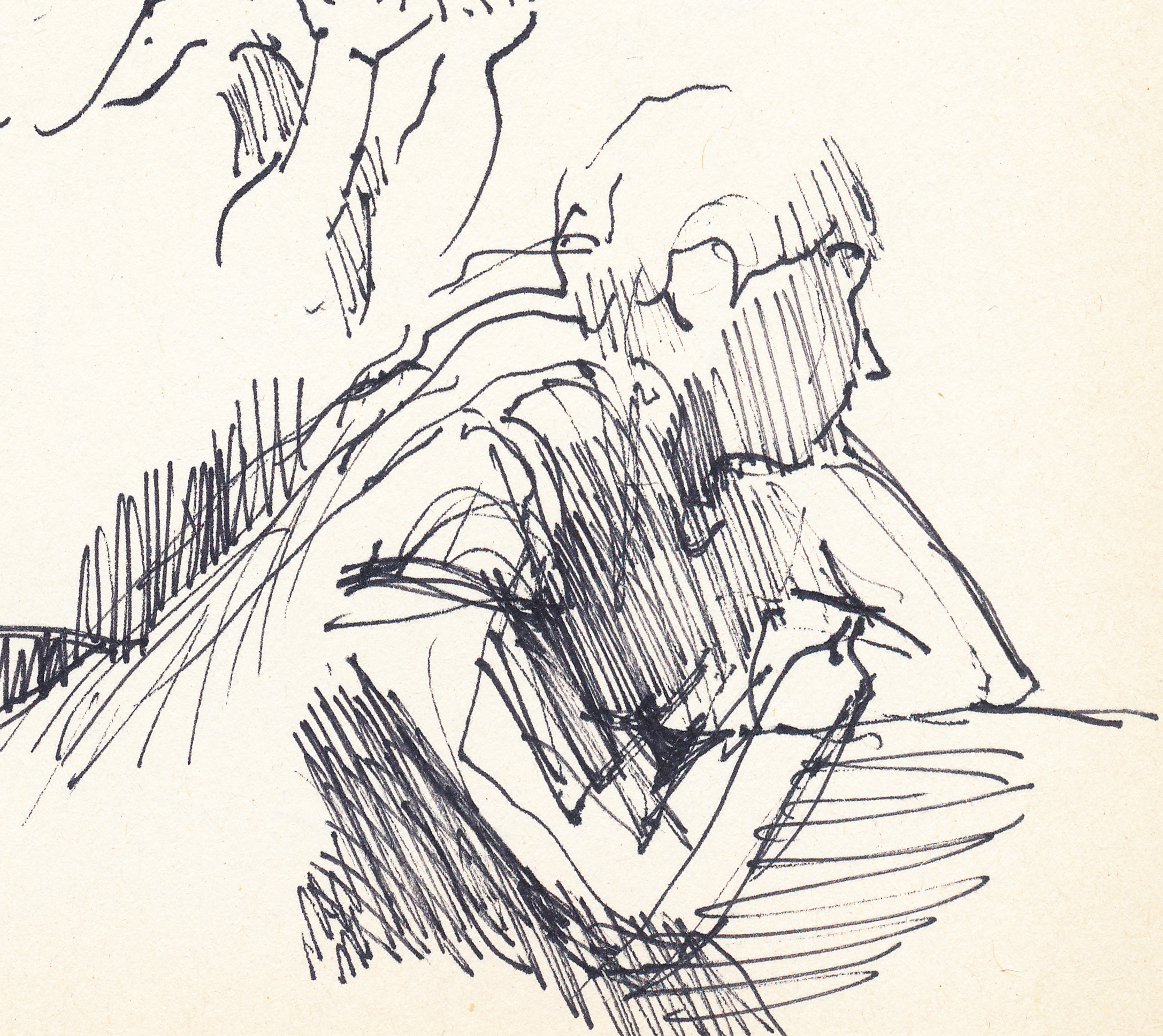
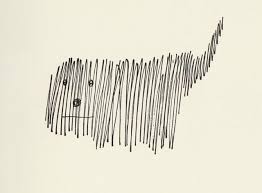
A commonly used hatching is parallel hatching: all lines in the same direction. For right-handed artists this is easiest from (diagonally) right to left, and for left-handed artists it is easiest from (diagonally) left to right.
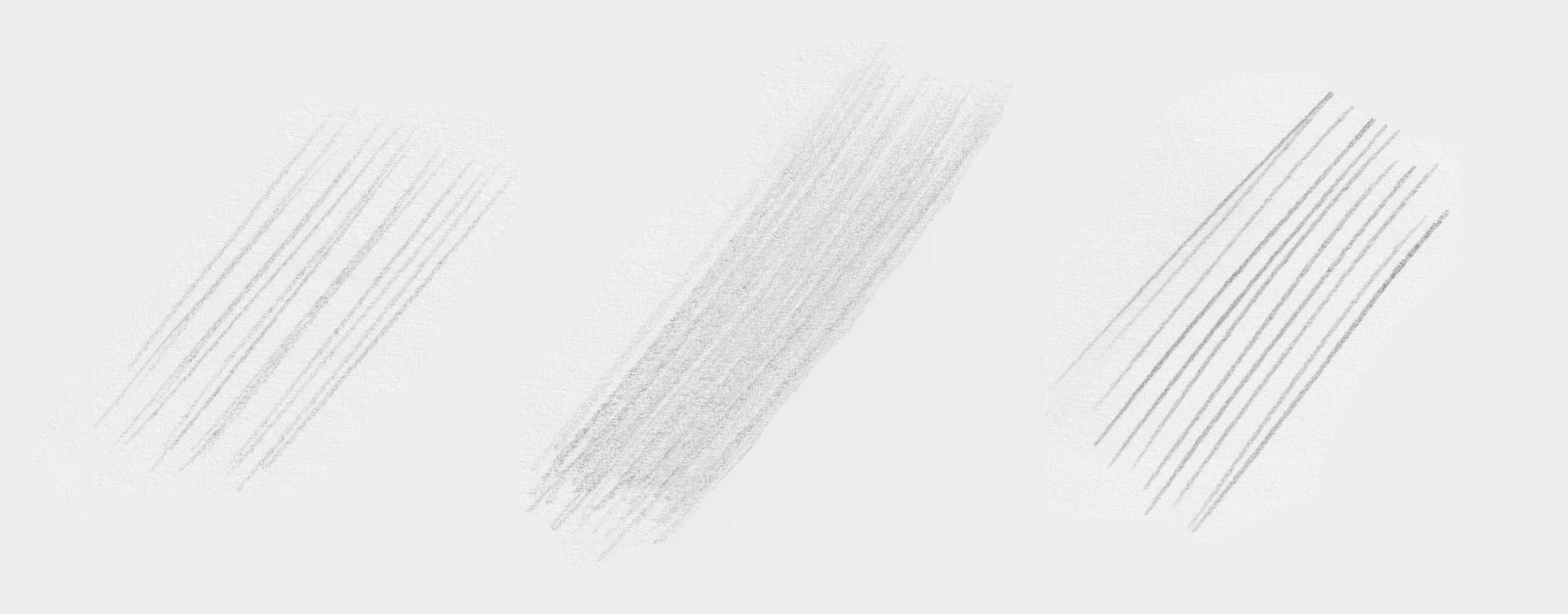
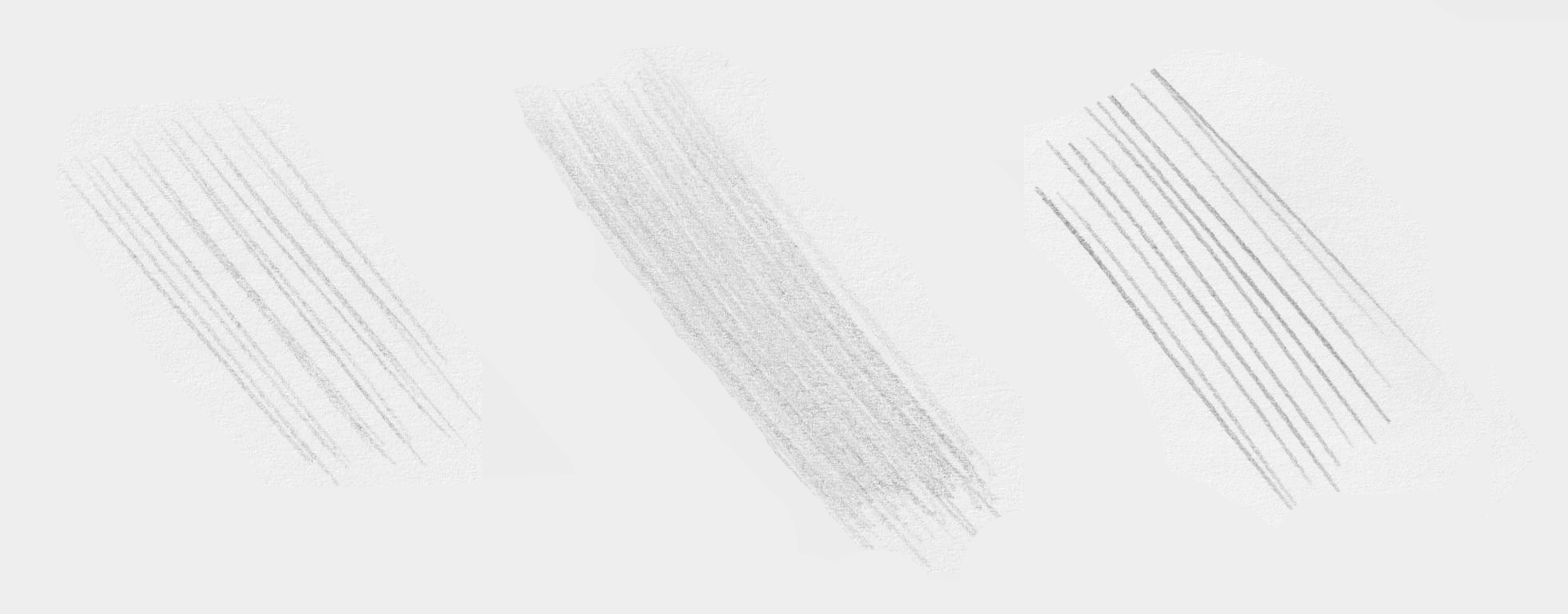
Exercise 1: Watch the VIDEO. Then try some loose hatching yourself. By continuing a little longer or pressing harder, the hatching becomes denser and/or darker.
Hatching can fill an entire plane (left). Hatching can even consist of dots (center). Hatching can also follow the curves of a shape (right).
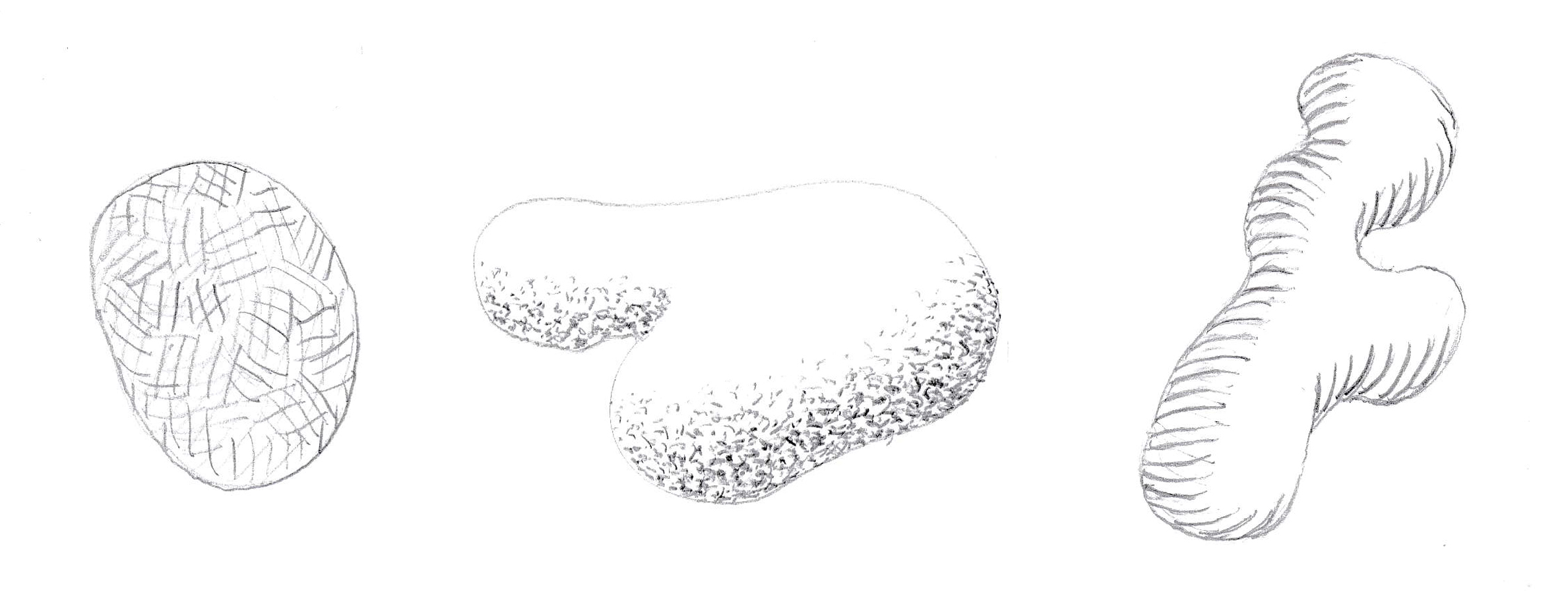
Exercise 2: Draw another endless line like you did in Chapter 1. I had saved mine. Fill resulting spaces with all sorts of hatching and maybe gray tones.
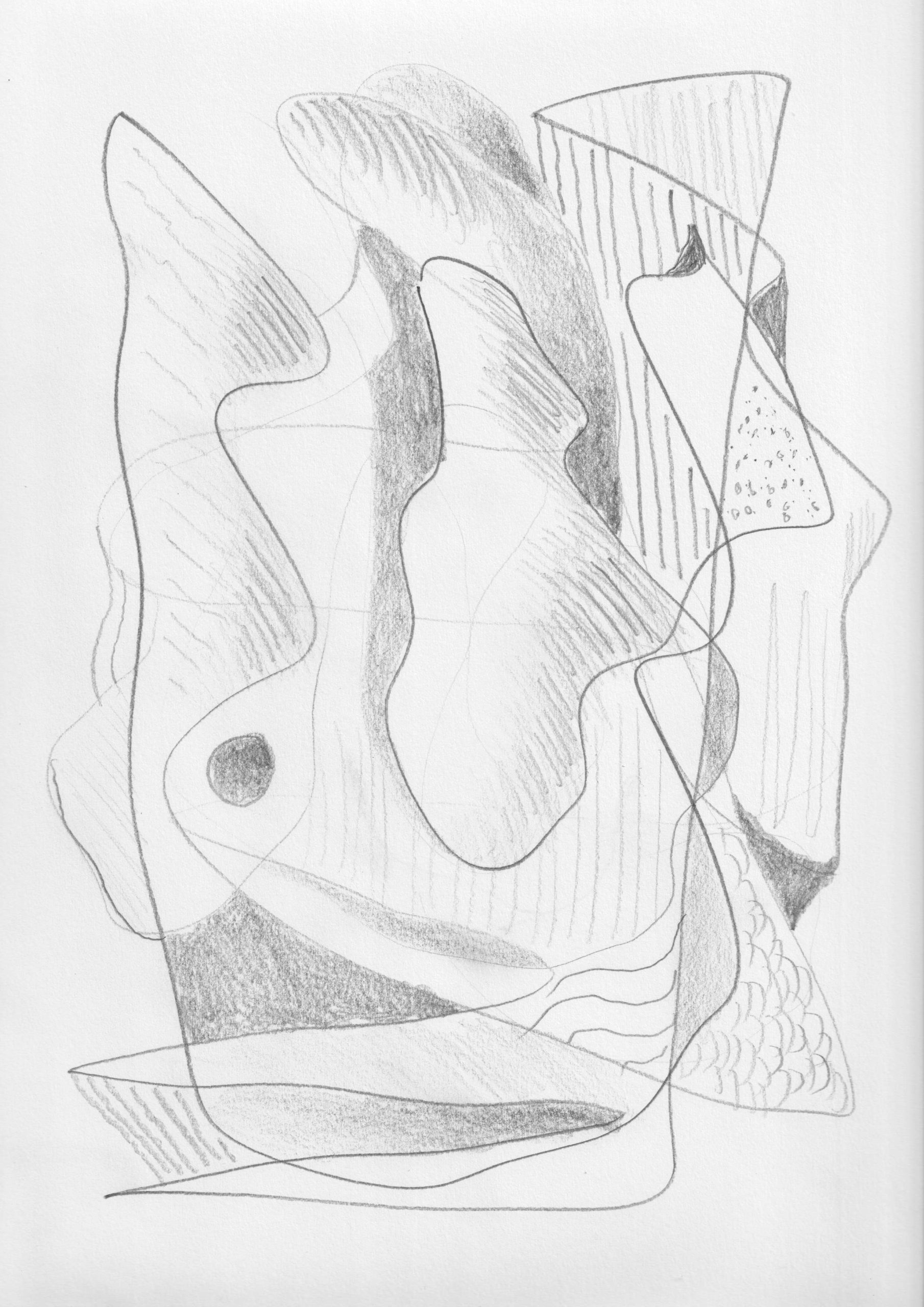
Suggestion: You could of course also fill in such randomly created surfaces/spaces in colour and with other materials, by drawing or painting.